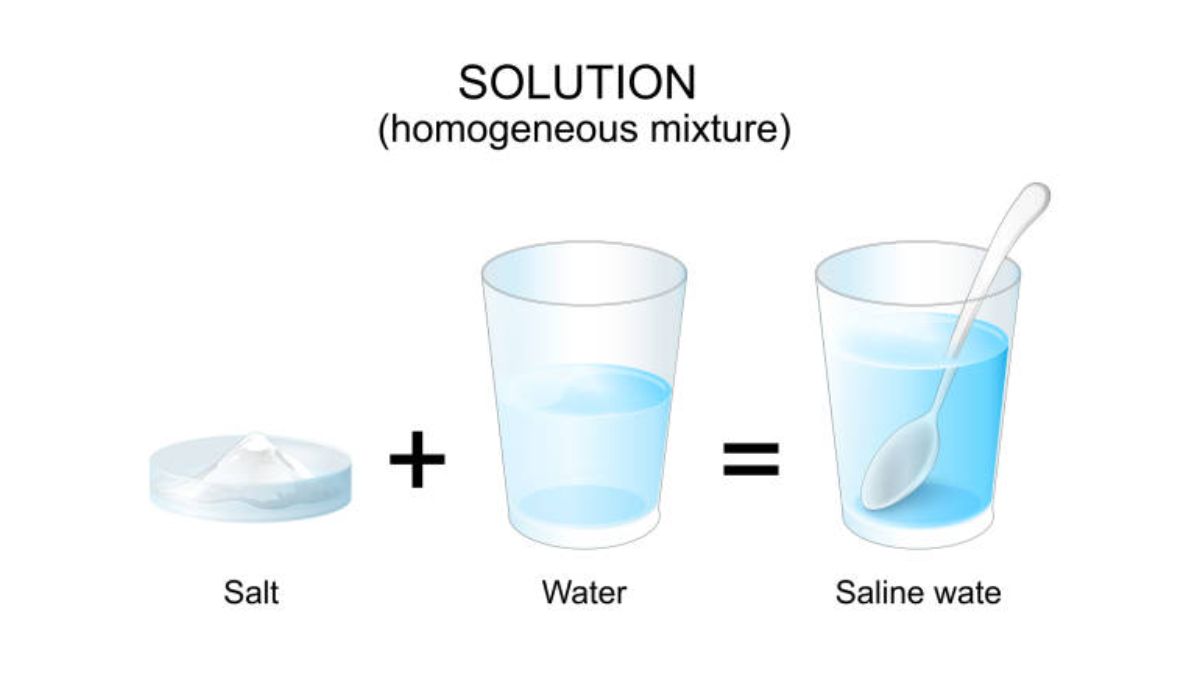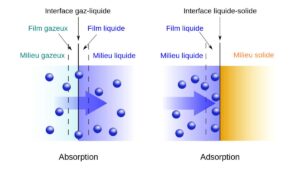For the students who are currently studying in class 12th or have taken a year off for the NEET 2026 exam preparations, it is now time to boost their preparations. While preparing for the exam, it is mandatory that the students are ready and learn all the important chapters that are a part of the NEET Syllabus 2026. This syllabus comprises of chapters from Chemistry, Physics, and Biology subjects.
In this chapter, we have shared the NEET Notes for the Salt Analysis Chapter that is a part of the NEET Chemistry Syllabus 2026. Scroll down in the article to access the NEET Notes as well as the important questions from this chapter.
Salt Analysis
Salt analysis is the systematic process of identifying the basic cations and acid anions present in an inorganic salt through a series of chemical tests. It typically involves preliminary examinations like physical observation and flame tests, followed by separate cation and anion analyses. Cations are identified by grouping them based on their solubility with specific reagents like hydrochloric acid (HCL), hydrogen sulfide (
), and ammonium carbonate (
), while anions are tested for through reactions with acids and other specific reagents that produce observable changes like gas evolution or precipitate formation.
Objectives of Salt Analysis
The objective of salt analysis is the systematic identification of the cations (basic radicals) and anions (acidic radicals) present in an unknown inorganic salt. This process, also known as systematic qualitative analysis, is used in academic laboratories to teach fundamental analytical chemistry and has broad applications in various industries.
- To identify acidic and basic radicals in an unknown salt.
- To understand group-wise separation of cations based on their solubility and reaction with group reagents.
- To develop a logical approach for systematic analysis.
- To correlate theory with observed results like precipitate color, flame test, and gas evolution.
Types of Radicals
Radicals can be classified in several ways, including as neutral or charged, and further categorized by the nature of the unpaired electron. Organic chemistry uses categories like primary (1°), secondary (2°), and tertiary (3°) based on carbon substitution, while inorganic chemistry uses classifications like basic and acidic radicals.
1. Basic Radicals (Cations):
Common cations encountered in NEET salt analysis are:
- Group I: Pb²⁺, Ag⁺, Hg₂²⁺
- Group II: Cu²⁺, Cd²⁺, Bi³⁺, Hg²⁺, As³⁺, Sb³⁺, Sn²⁺
- Group III: Fe³⁺, Al³⁺, Cr³⁺
- Group IV: Zn²⁺, Mn²⁺, Co²⁺, Ni²⁺
- Group V: Ba²⁺, Sr²⁺, Ca²⁺
- Group VI: Mg²⁺, Na⁺, K⁺, NH₄⁺
2. Acidic Radicals (Anions):
Common anions are:
CO₃²⁻, SO₄²⁻, NO₃⁻, Cl⁻, Br⁻, I⁻, PO₄³⁻, CH₃COO⁻, etc.
Systematic Procedure of Salt Analysis
The systematic procedure for salt analysis involves preliminary tests on the solid salt, followed by a two-part analysis for anions (acid radicals) and cations (basic radicals) in solution. Anion analysis typically begins with a group-wise test, and if a group is positive, specific confirmatory tests are performed to identify the exact anion. The cation analysis is also conducted using a similar group-separation scheme and confirmatory tests.
Preliminary Tests
- Physical Observation: Note the color and texture of the salt.
- White salts → Zn²⁺, Al³⁺, Ca²⁺, etc.
- Green salts → Ni²⁺, Fe²⁺
- Blue salts → Cu²⁺
- Flame Test: Identifies alkali and alkaline earth metals.
- Na⁺ → Yellow
- K⁺ → Violet
- Ca²⁺ → Brick Red
- Sr²⁺ → Crimson Red
- Ba²⁺ → Apple Green
Dry Tests
- Charcoal Cavity Test: Detects color of metallic residue after heating.
- Borax Bead Test: Used for transition metals (e.g., Cr gives green bead, Cu gives blue).
- Flame or Soda Test: Identifies certain metal ions by color.
Wet Tests for Acid Radicals
- Add dilute H₂SO₄: effervescence indicates CO₃²⁻ (due to CO₂ gas).
- Add BaCl₂ solution: white precipitate indicates SO₄²⁻.
- Add AgNO₃ solution:
- White ppt soluble in NH₄OH → Cl⁻
- Pale yellow ppt partially soluble → Br⁻
- Yellow ppt insoluble → I⁻
Group Analysis for Basic Radicals
Cations are divided into groups based on solubility and the reagent used for precipitation:
| Group | Reagent |
Radicals Detected
|
| I | Dil. HCl | Pb²⁺, Ag⁺, Hg₂²⁺ |
| II | H₂S in acidic medium |
Cu²⁺, Cd²⁺, Hg²⁺, As³⁺
|
| III | NH₄OH + NH₄Cl | Fe³⁺, Al³⁺, Cr³⁺ |
| IV | H₂S in basic medium |
Zn²⁺, Ni²⁺, Co²⁺, Mn²⁺
|
| V | (NH₄)₂CO₃ | Ba²⁺, Sr²⁺, Ca²⁺ |
| VI | Direct tests |
Mg²⁺, Na⁺, K⁺, NH₄⁺
|
Confirmatory Tests
Confirmatory tests are secondary, independent procedures used to verify the results of an initial screening test, ensuring accuracy and reliability in fields like forensic toxicology, medical diagnosis, and quality control. These tests provide definitive proof by confirming the chemical structure or identity of a substance and are often legally required for court-admissible evidence. Common examples include using techniques like gas chromatography-mass spectrometry (GC-MS) to confirm drug presence or using specific chemical reactions to identify substances like blood.
- Each ion has a specific confirmatory test to validate its presence.
- Example:
- Fe³⁺ → Blood red color with KSCN.
- Cu²⁺ → Blue solution with NH₄OH.
- NH₄⁺ → Ammonia smell with NaOH solution.
Benefits of Salt Analysis NEET Notes
Below, we have listed some of the benefits sharing the importance of Salt Analysis NEET Notes:
- Salt Analysis Notes help students understand the fundamental principles of ion detection, solubility, and precipitation – strengthening the base of inorganic chemistry for NEET.
- Regular study of these notes improves analytical thinking and helps students identify cations and anions logically, which is crucial for NEET conceptual questions.
- The notes organize a large number of reactions systematically, making it easier to remember reagents, color changes, and confirmatory tests.
- Students learn how theoretical concepts like solubility product, common ion effect, and amphoterism apply in practical qualitative analysis.
- NEET notes for Salt Analysis provide concise charts and summaries for quick recall before the exam, saving valuable preparation time.
- Salt Analysis often forms the basis of multiple-choice questions in NEET; mastering it through these notes increases accuracy and confidence.
- The topic connects lab-based experiments with textbook chemistry, improving overall understanding and retention.
- The color-based identification of salts and precipitates creates strong visual cues, making memorization easier and more effective during exam recall.
NEET Important Questions – Salt Analysis
Question 1. Which gas is evolved when dilute HCl is added to a carbonate salt?
(a) CO₂
(b) SO₂
(c) NO₂
(d) NH₃)
Question 2. What is the color of the precipitate formed when Fe³⁺ reacts with NH₄OH?
(a) Blue
(b) Brown
(c) Green
(d) White)
Question 3. Which of the following ions can be identified using the flame test giving a yellow color?
(a) Na⁺
(b) K⁺
(c) Ba²⁺
(d) Sr²⁺)
Question 4. BaCl₂ solution is used to test for which acidic radical?
(a) CO₃²⁻
(b) SO₄²⁻
(c) NO₃⁻
(d) Cl⁻)
Question 5. Which reagent is used to precipitate Group I cations in qualitative analysis?
(a) Dilute HCl
(b) H₂S
(c) NH₄OH
(d) (NH₄)₂CO₃)
Question 6. What is the confirmatory test for Fe³⁺ ions?
(a) Blood red coloration with KSCN
(b) Blue precipitate with NH₄OH
(c) White precipitate with AgNO₃
(d) Green solution with NH₄OH)
Question 7. What is observed when dilute H₂SO₄ is added to Na₂CO₃?
(a) Effervescence due to CO₂ gas
(b) No reaction
(c) Yellow precipitate
(d) Brown ring formation)
Question 8. Which of the following hydroxides is amphoteric?
(a) Zn(OH)₂
(b) Ca(OH)₂
(c) NaOH
(d) Fe(OH)₃)
Question 9. In which group are Cu²⁺ and Cd²⁺ cations detected?
(a) Group I
(b) Group II
(c) Group III
(d) Group IV)
Question 10. Which of the following gases smells like rotten eggs and blackens lead acetate paper?
(a) CO₂
(b) H₂S
(c) NH₃
(d) SO₂)
Question 11. How can Cl⁻, Br⁻, and I⁻ be distinguished in salt analysis?
Question 12. Why is NH₄Cl added before adding NH₄OH in Group III analysis?
Question 13. Which color is observed when Cu²⁺ ions react with NH₄OH?
Question 14. What is the brown ring test used for?
Question 15. Why is H₂S passed in acidic medium for Group II but in basic medium for Group IV cations?
Question 16. Which gas is evolved when dilute H₂SO₄ reacts with a carbonate salt?
Question 17. Why does PbCl₂ dissolve in hot water but AgCl does not?
Question 18. What is the confirmatory test for Fe³⁺ ion?
Question 19. Why is H₂S passed in acidic and basic medium in different stages of cation analysis?
Question 20. How can you distinguish between Cl⁻, Br⁻, and I⁻ using AgNO₃?
Question 21. Which reagent is used to identify SO₄²⁻ ion?
Question 22. What is the color of precipitate obtained when Fe³⁺ reacts with NH₄OH?
Question 23. Explain the role of NH₄Cl in the analysis of Group III cations.
Question 24. Name one amphoteric hydroxide and write its reaction with NaOH.
Question 25. Why is flame test not suitable for all metallic ions?









 NEET Preparation Strategy 2026: Detailed...
NEET Preparation Strategy 2026: Detailed...
 Free NEET Sample Papers 2026 PDF | Downl...
Free NEET Sample Papers 2026 PDF | Downl...
 Surface Chemistry NEET Notes, Check Impo...
Surface Chemistry NEET Notes, Check Impo...









